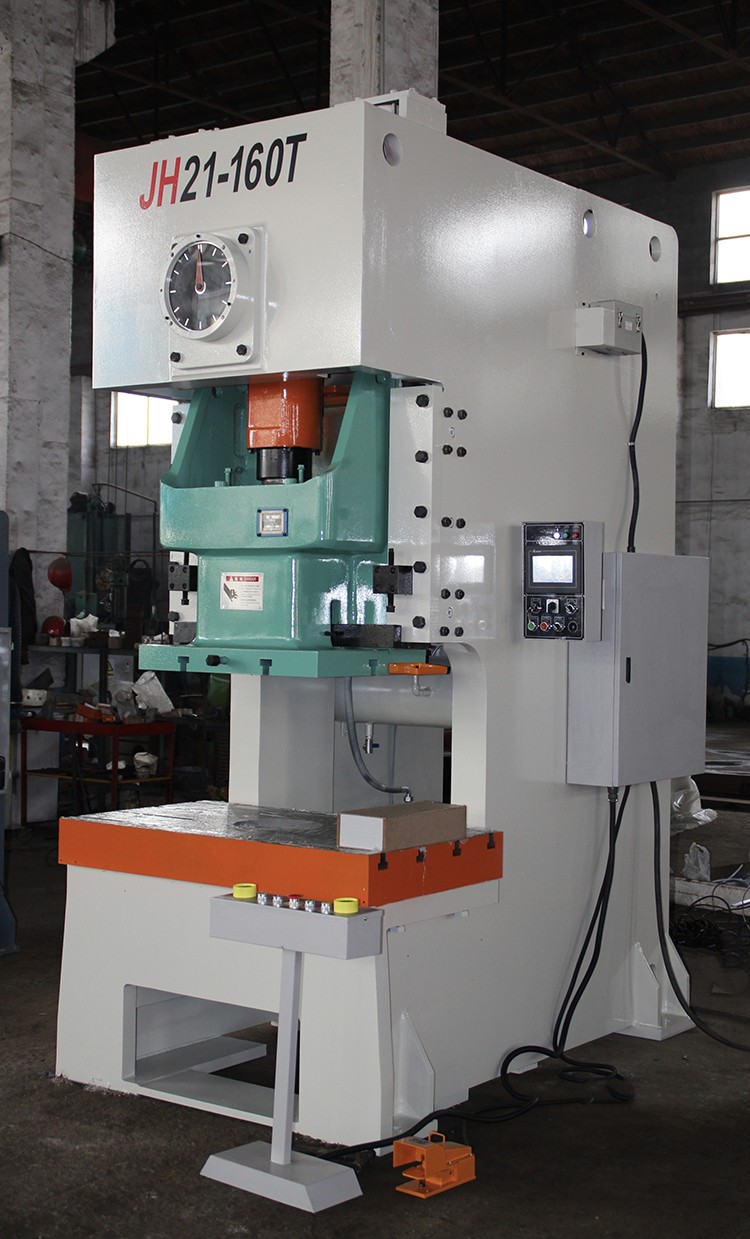

We are a professional punching machine manufacturer with over 10 years of industry experience. Today, we would like to introduce you to the analysis of power saving design features and energy efficiency standards for punching machine:

In modern industrial production, the energy consumption of press equipment is a growing concern. With the rising energy costs and environmental protection requirements, the power-saving design and energy-efficiency standards of punching machines have become important considerations for equipment selection. In this paper, we will analyze the characteristics of power-saving technology and energy-efficiency evaluation criteria from two aspects.
1, The technical characteristics of power-saving design
The application of servo drive system is the core technology of current power-saving design of punching machine. Compared with traditional asynchronous motors, servo motors only consume large amounts of power at the moment of stamping, and energy consumption is significantly reduced in the standby and idle stages. Intelligent control system can accurately match the motor output with the actual load to avoid energy waste. Some high-end models are equipped with energy return device, which can convert kinetic energy in the braking process into electric energy for transmission back to the power grid.
Energy-saving improvement of the hydraulic system is mainly reflected in the application of variable pump technology. Traditional quantitative pumps still maintain full flow output at low loads, resulting in energy waste. Variable pump can automatically adjust the output flow according to the actual pressure demand, reducing ineffective power consumption. The use of accumulators can balance the system pressure fluctuations, reducing the energy loss caused by frequent motor start and stop.
The optimized design of the mechanical structure also affects the energy consumption performance. Lightweight slider design reduces the mass of moving parts and reduces acceleration energy consumption. Optimization of the transmission system reduces gear mesh and bearing friction losses. The application of balancing devices can offset the inertia force generated by the movement of the slider, reducing the load on the motor.
Improvements in the thermal management system contribute to energy savings. Efficient cooling system ensures that the motor and hydraulic oil are in the optimal operating temperature range. Thermal insulation reduces heat loss and maintains stable system temperatures in cold environments. Waste heat recovery device converts waste heat into useful energy.
2, Energy efficiency evaluation standard system
The energy efficiency standards formulated by the International Electrotechnical Commission (IEC) categorize the energy efficiency of motors into five classes from IE1 to IE5. At present, the mainstream punching machine equipment mostly adopts IE3 and above energy-efficiency grade motors. Some countries have implemented a mandatory energy efficiency labeling system, requiring equipment to be marked with energy consumption levels.
No-load power ratio is an important indicator for evaluating the energy efficiency of punching machines. The no-load power of traditional mechanical presses can reach 30%-50% of the rated power, while servo presses can be controlled within 10%. The energy consumption per unit of output (kWh/ton) is more intuitive to reflect the actual production efficiency, but it is greatly affected by the processed materials.
Energy efficiency test standards define specific measurement methods. This includes the definition of the standard test conditions, the accuracy requirements of the measuring instruments, and the frequency of data collection. Continuous operation tests usually require the recording of energy consumption data for at least one full operating cycle. Dynamic Response Test evaluates the energy consumption characteristics during sudden load changes.
Energy efficiency labeling systems vary in different regions. The European Union's ERP Directive sets minimum energy efficiency requirements for equipment entering the market. China's energy efficiency labeling system categorizes equipment into levels 1 to 3, with level 1 being the highest level of energy efficiency. Some countries implement energy efficiency subsidy policies to encourage the procurement of energy efficient equipment.
3, Energy efficiency management in practical application
Equipment selection should take into account the initial investment and operating costs. High energy-efficiency equipment, although the acquisition cost is higher, but in the long-term use of electricity can be saved through the recovery of the difference. Production scheduling optimization can reduce equipment idle time and improve energy efficiency. Regular maintenance ensures that the equipment is always in optimal working condition and avoids energy loss due to wear and tear of components.
The installation of energy consumption monitoring systems helps to identify energy saving potential. Real-time display of power curves can identify abnormal energy consumption points. Comparative analysis of historical data assesses the actual effectiveness of energy-saving measures. Integration with production management systems enables correlation analysis between energy consumption and production.
4, The future development trend
The application of permanent magnet synchronous motors will further reduce the energy consumption of the drive system. Intelligent predictive control algorithms can automatically optimize the motion trajectory according to the machining task, reducing unnecessary energy consumption. The development of energy storage technology allows instantaneous high power demand to be balanced by devices such as super capacitors, reducing the impact on the power grid.
The pace of updating energy efficiency standards is accelerating. Test methods will be closer to actual working conditions. The classification of energy efficiency levels will be more refined, promoting continuous technological progress. Whole life cycle energy consumption assessment will be incorporated into the standard system, including energy consumption in manufacturing, transportation and recycling.
The power-saving design of punching machines involves technological innovations in many aspects, such as drive systems, hydraulic systems, and mechanical structures. The improvement of energy efficiency standards provides an objective basis for equipment selection. In actual application, it is necessary to choose appropriate technical solutions in combination with production requirements and realize the best energy-saving effect through scientific management. With the technical progress and standard improvement, the energy efficiency level of press equipment will continue to improve.
If you are interested in punching machine, please contact us.
 Address:Room 1202, Detaitang Building, No. 118 Huaguang Road, Zhangdian District, Zibo, Shandong
Address:Room 1202, Detaitang Building, No. 118 Huaguang Road, Zhangdian District, Zibo, Shandong WhatsApp:+8615653328535
WhatsApp:+8615653328535 Wechat: +8615965331535
Wechat: +8615965331535  E-mail:zs@sdsmachinery.com
E-mail:zs@sdsmachinery.com